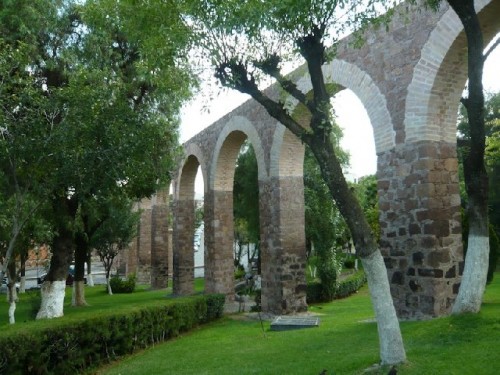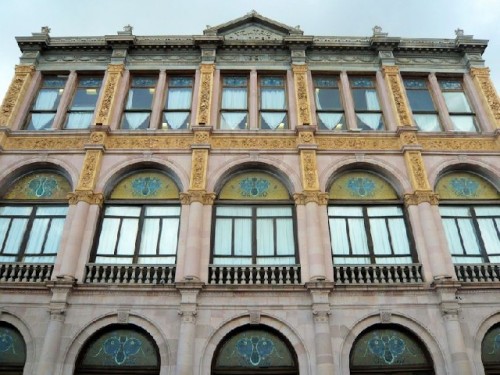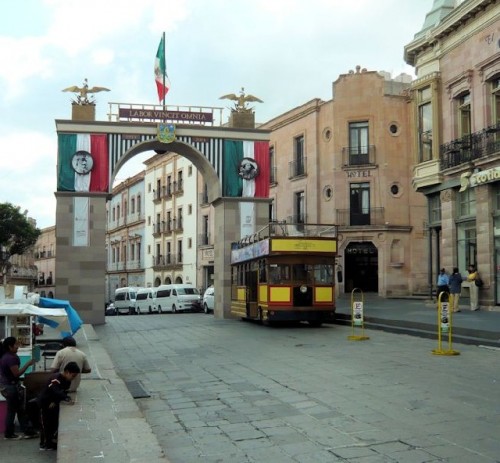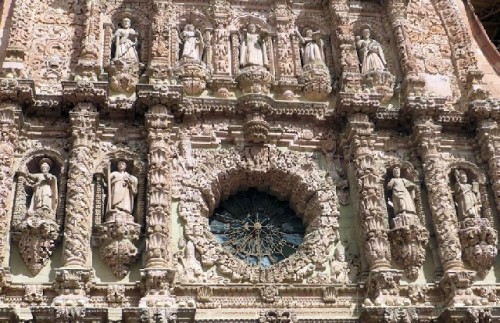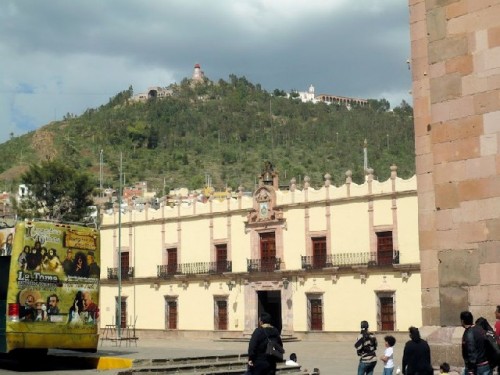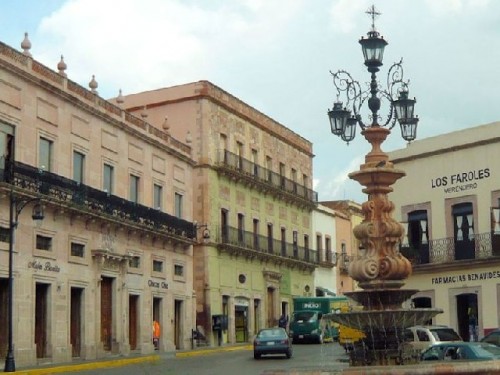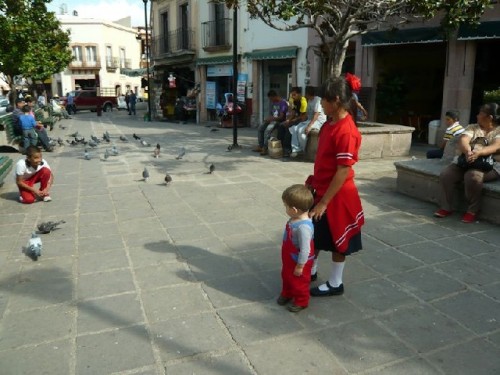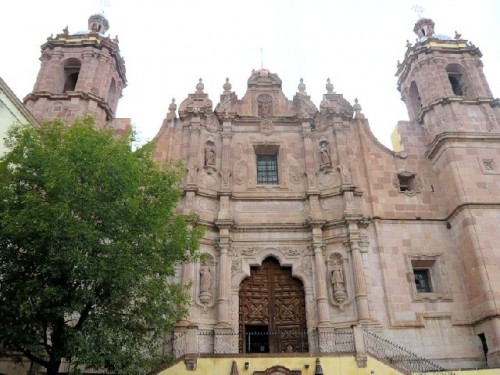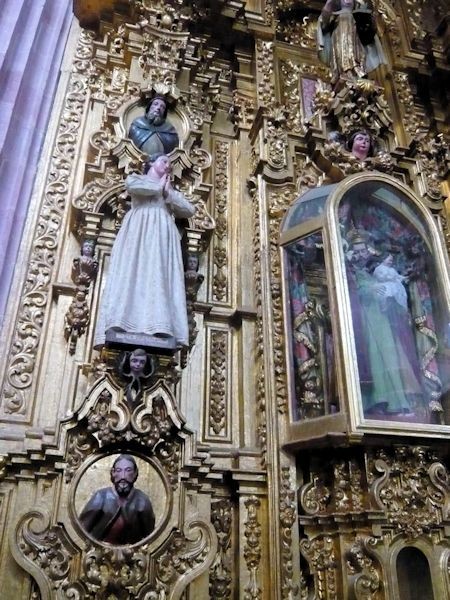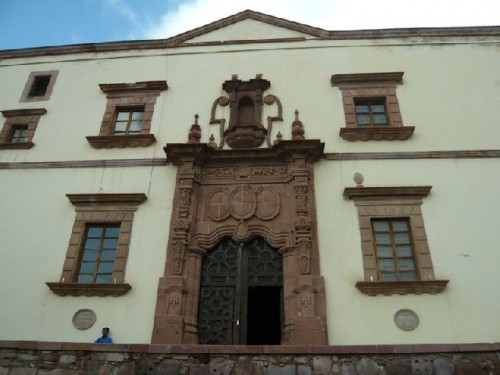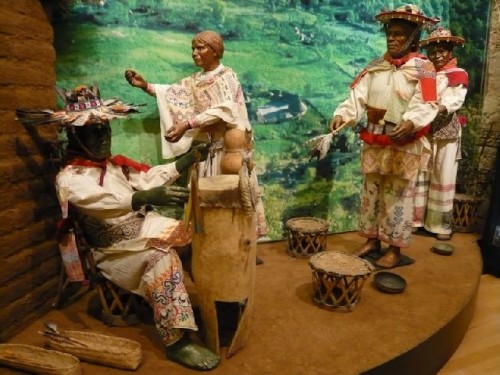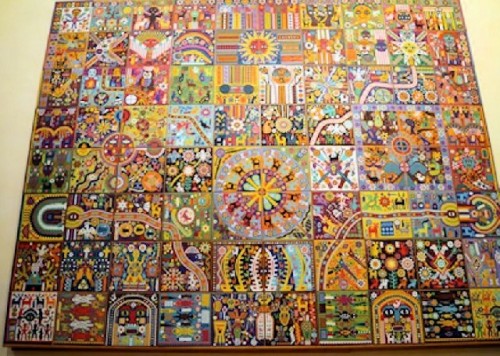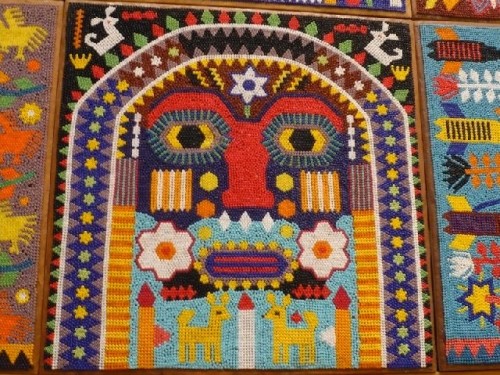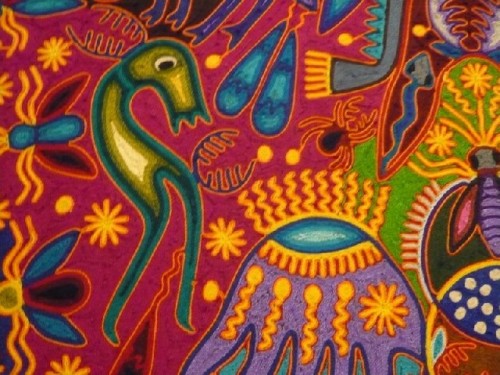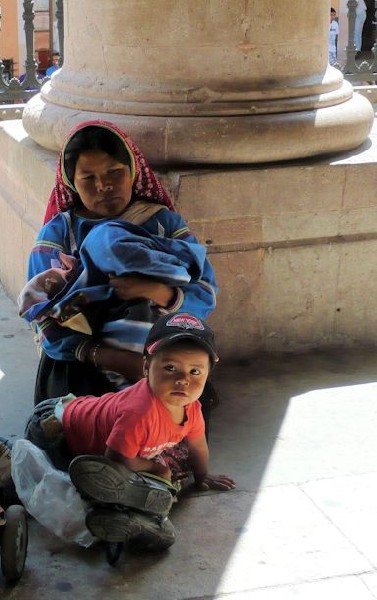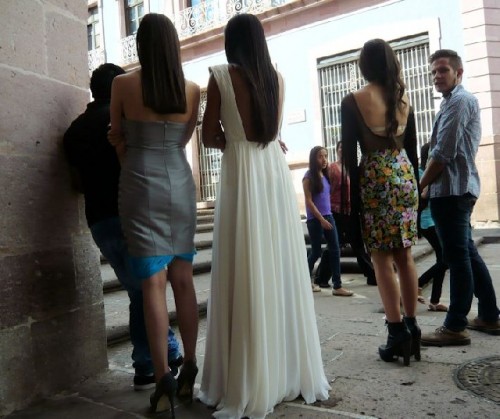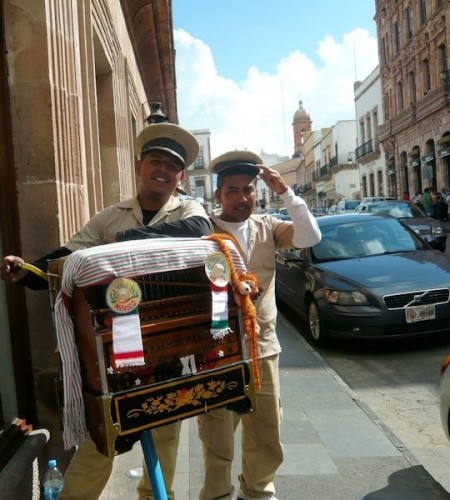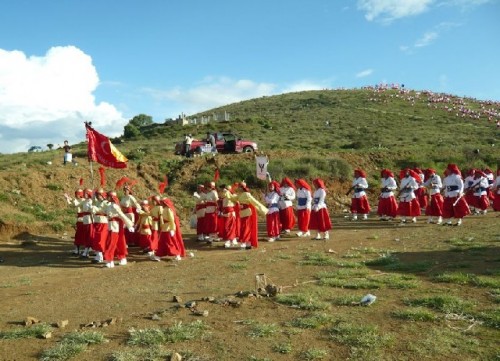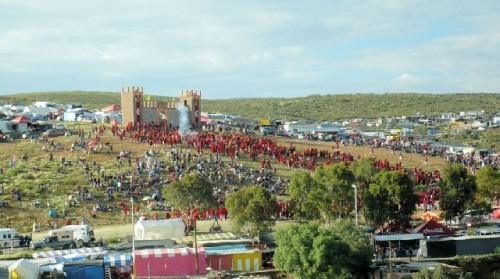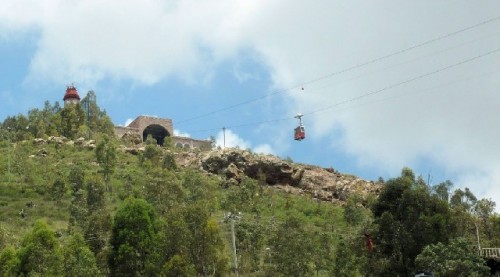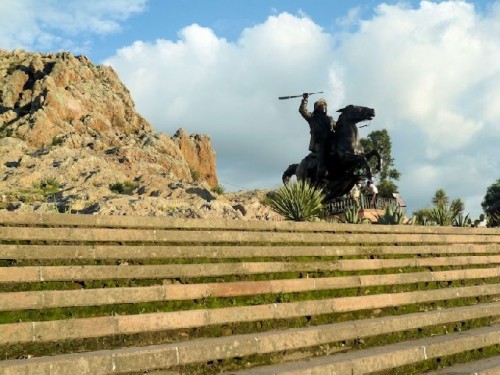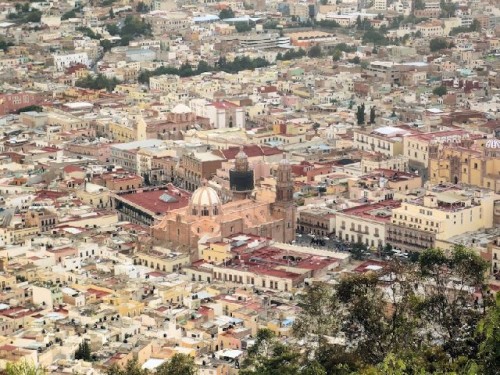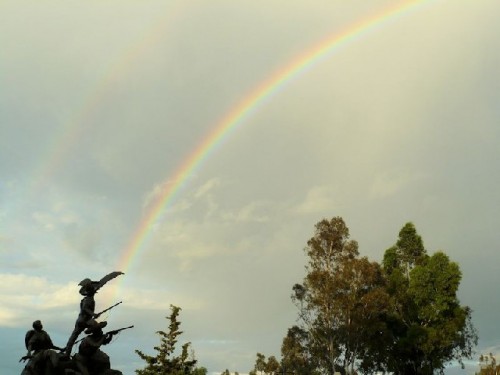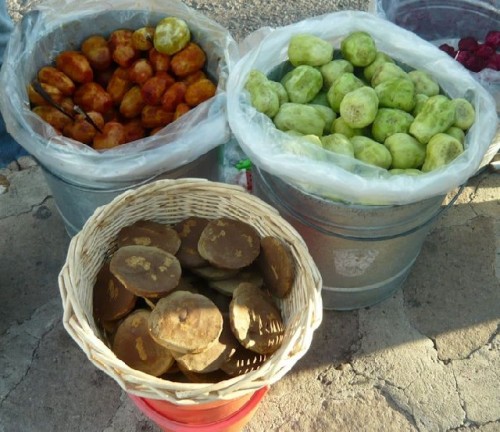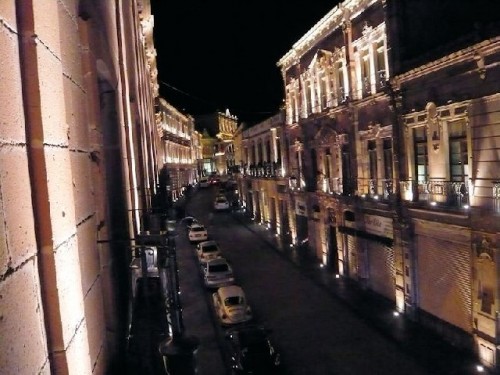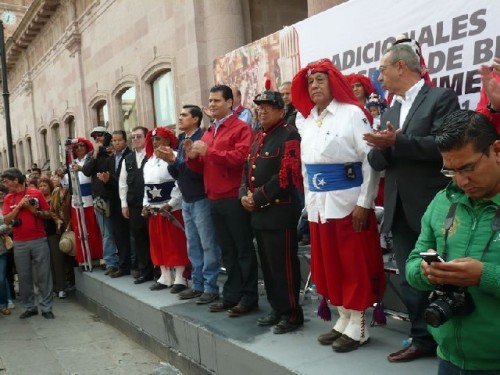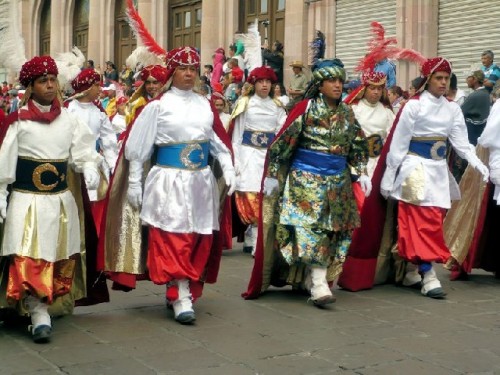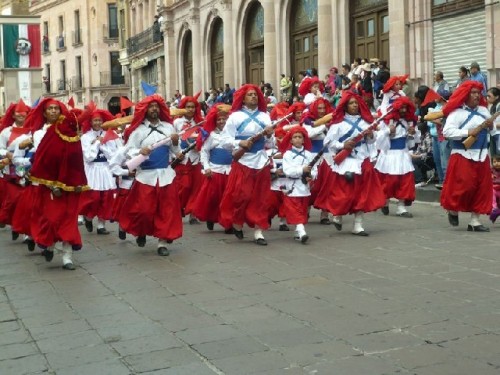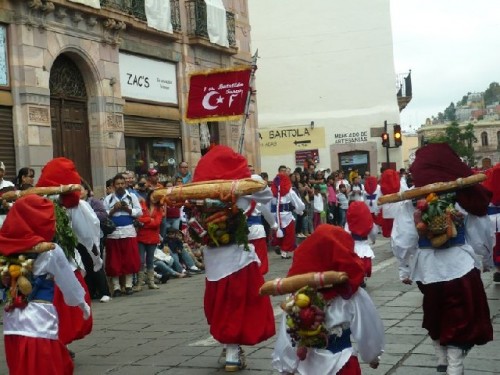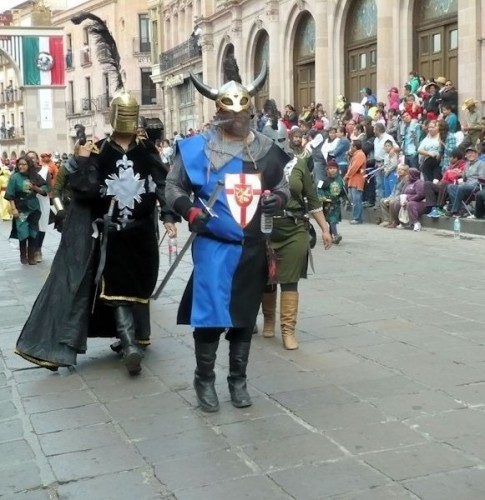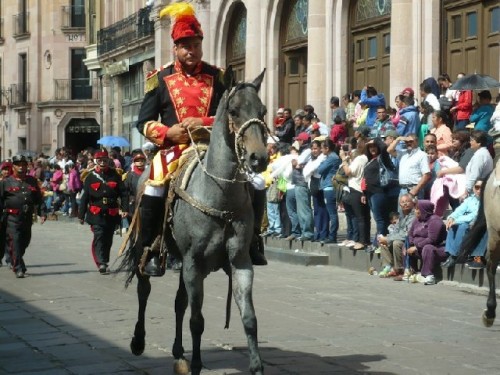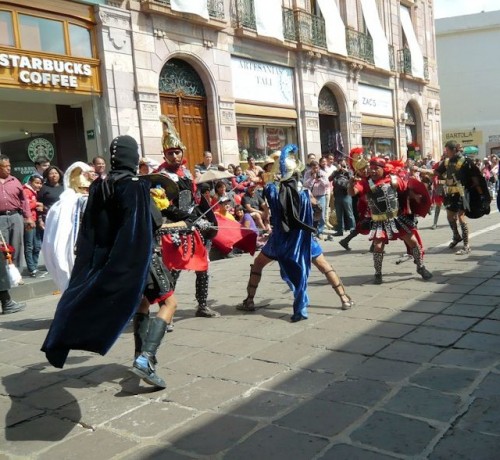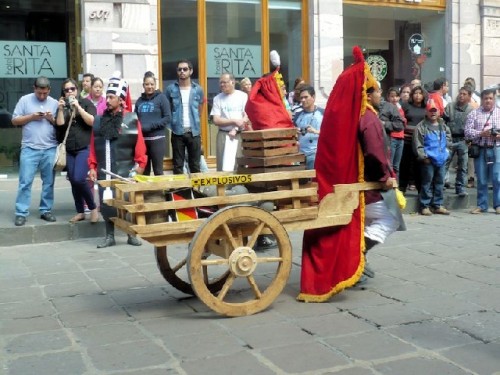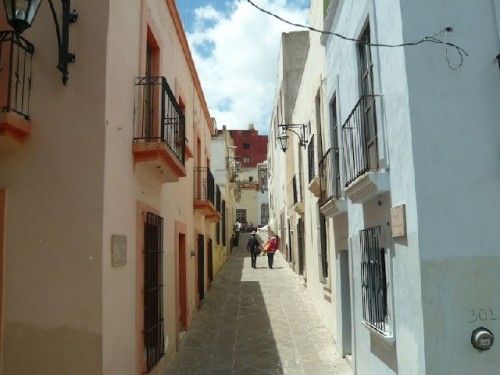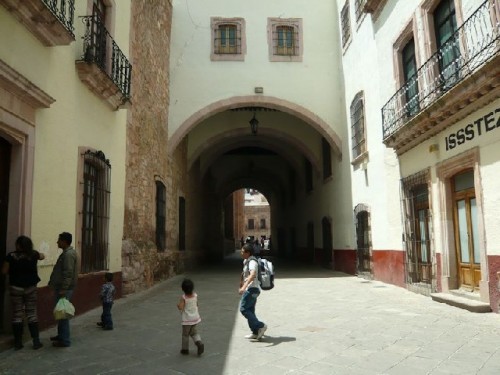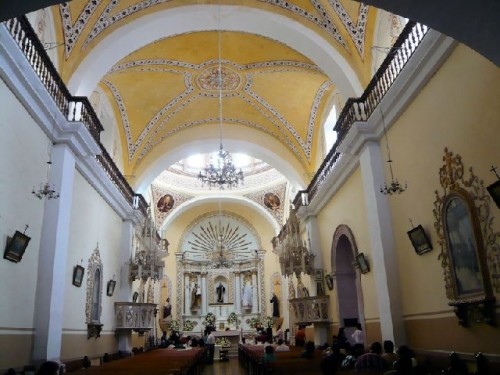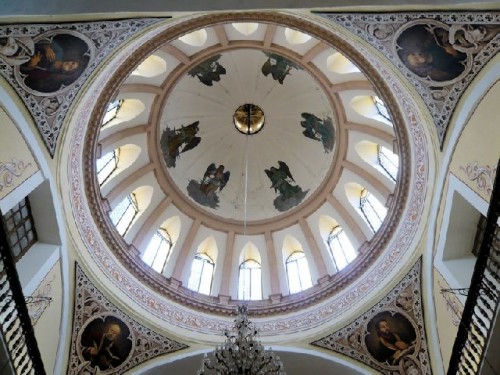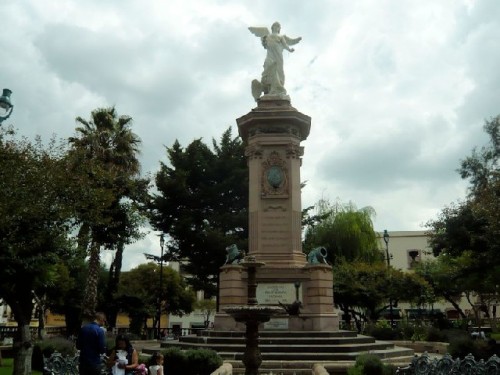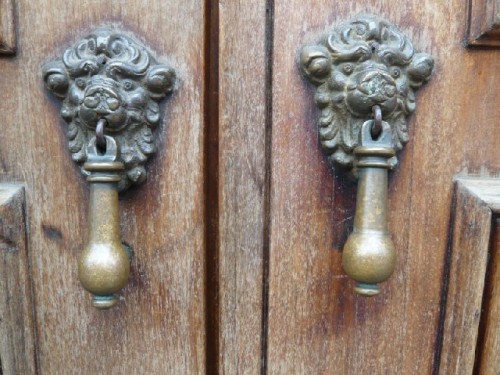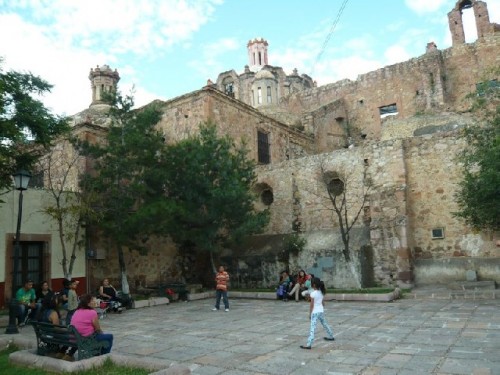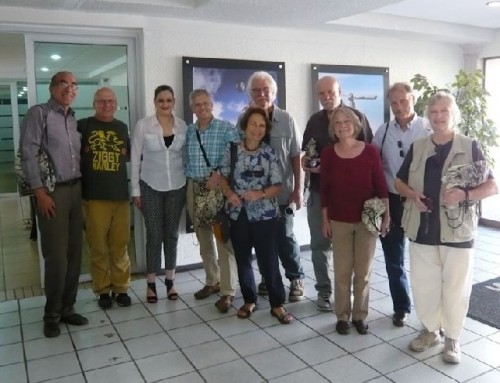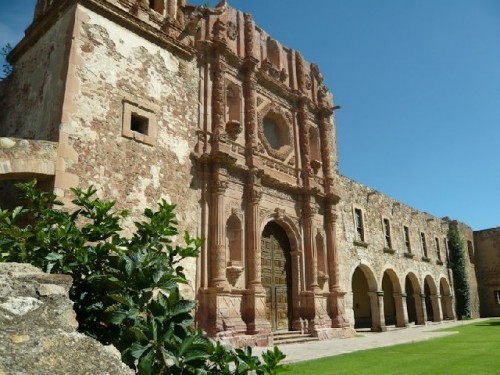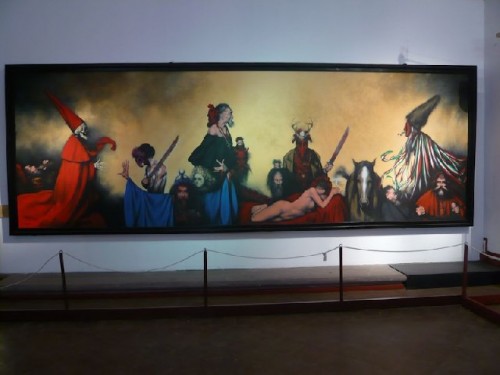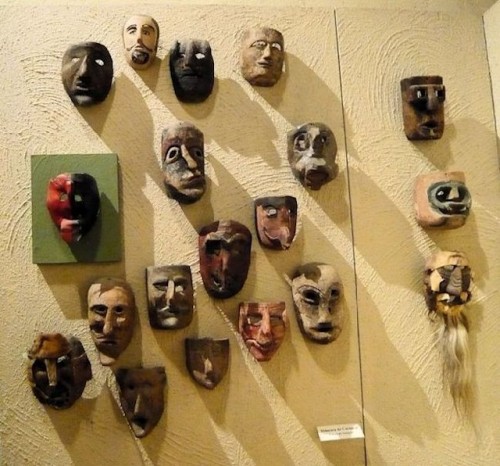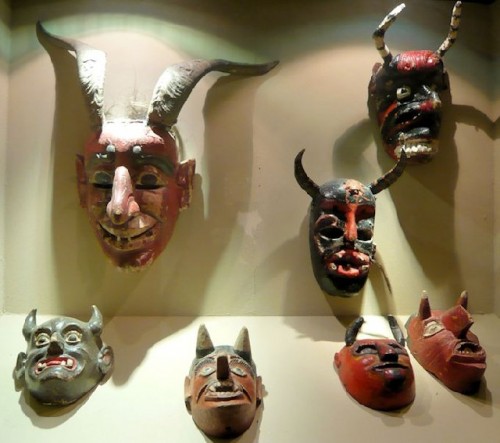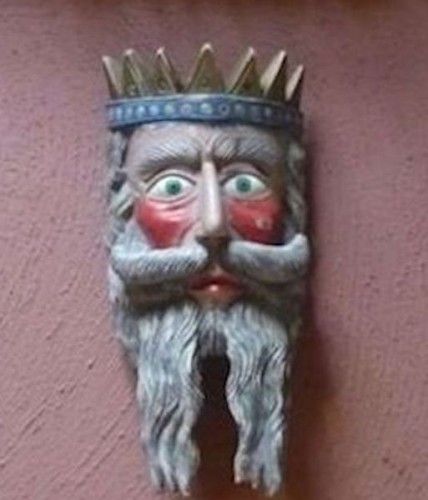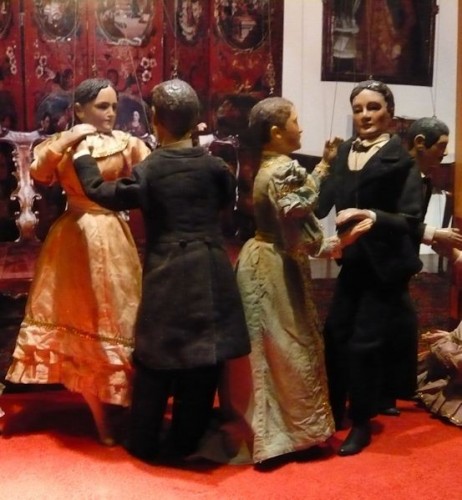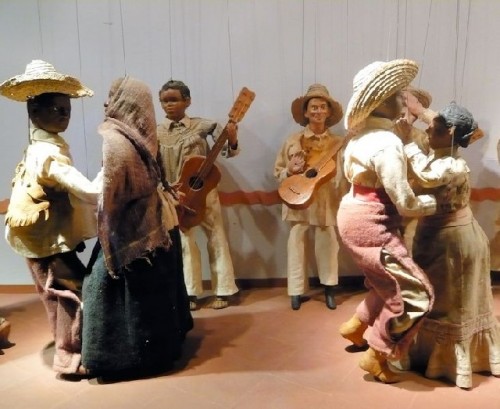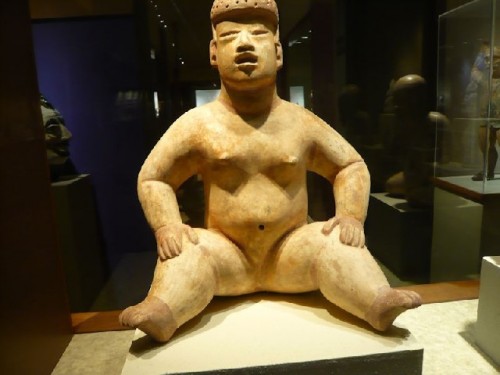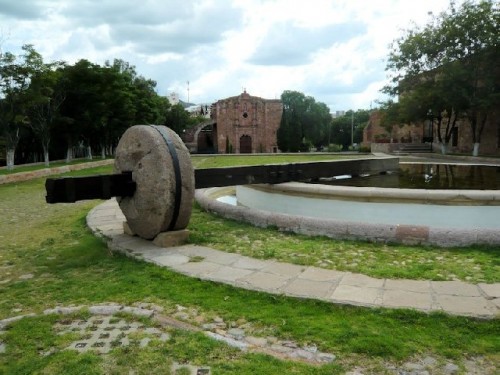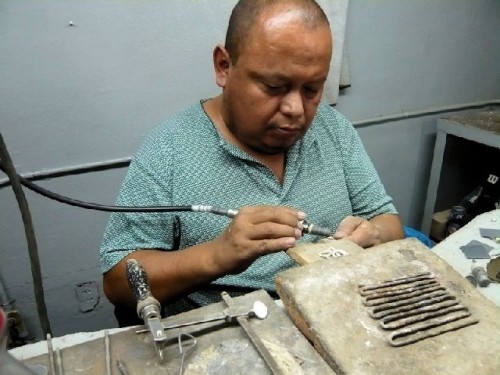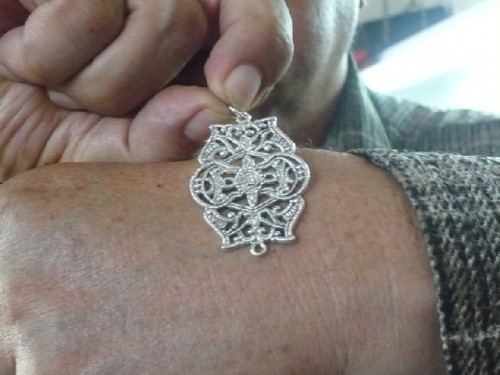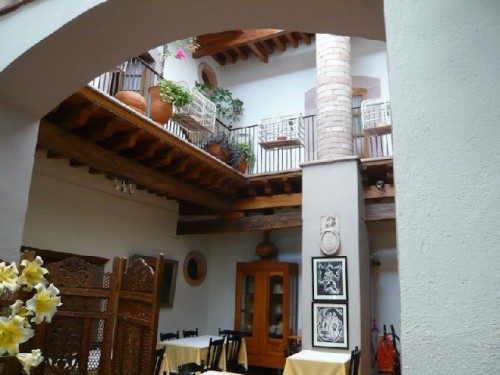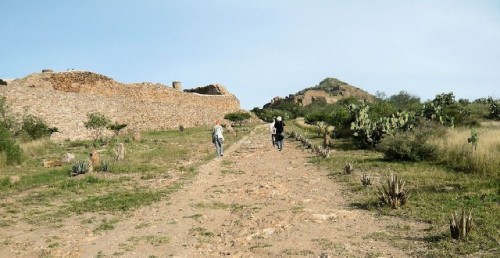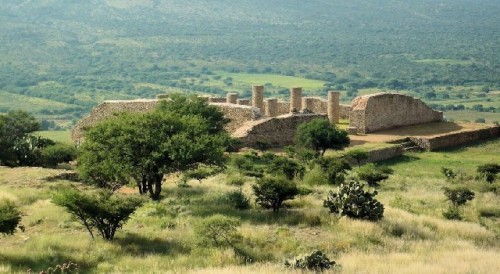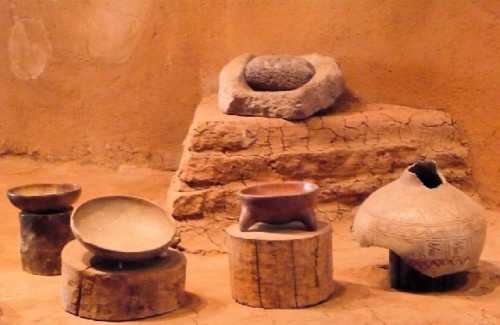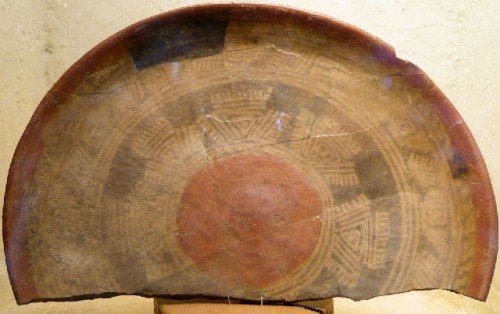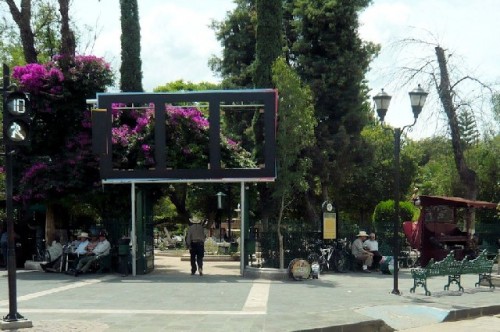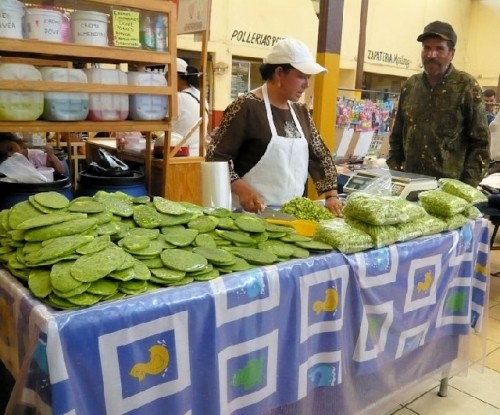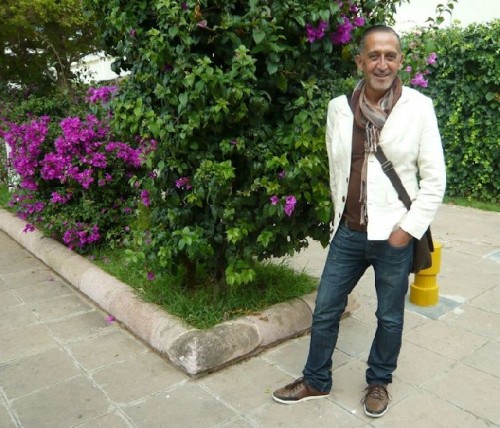Zacatecas
The City with Museums
By: Zeren Earls - Oct 30, 2014
The Quinta Real Hotel, built around a bullring dating from 1866 and across from the 16th-century El Cubo Aqueduct with its monumental pink stone arches, was our unique home base for five nights. Although it was summertime, the temperature was comfortable in the low 70s due to our altitude of 8010 feet above sea level.
After check-in, we strolled to the nearby historic center of the city, known for its “stone face and silver heart.” A UNESCO world heritage site since 1993, Zacatecas was founded in 1546 by Spanish conquistadors, lured by the rich silver deposits of the area. The mining city prospered, resulting in exuberant architecture with ornate facades and lavish interiors, including churches to express gratitude for divine intervention in working the mines, enriching Spaniards for colonization and evangelization in the New Spain.
The Cathedral Basilica is the centerpiece of the Spaniards’ gratitude. The building’s Mexican baroque facade has columns with Corinthian capitals, and ornamentation including apostles, angels, and plant motifs made from pink sandstone, which changes hues with the sun. The interior of the cathedral has Doric columns and neoclassical altars. Its main altarpiece has a modern sculpture of the Virgin of the Assumption, which appears with ten sandstone figures against a backdrop covered with 24-carat gold leaf.
At the entrance to the main street, Hidalgo, an arched gateway, erected to commemorate the centenary of the capture of Zacatecas on 23 June 1914, welcomed us to the city. Continuing on foot, we admired buildings such as the French-style 19th-century Calderón Theater, named after the playwright, and the beautiful window bars and railings on many of the buildings. Noting the streets and narrow alleys that come together in picturesque plazas, we completed the impressionistic tour and returned to the hotel for dinner. We dined in the restaurant overlooking the bullring, which was being set up for a wedding the next day.
In the morning, breakfast at the nearby restaurant Vips, with an English menu, had sufficient variety as an alternative to the offerings at our five-star hotel. The day’s excursion began at the Plaza Santo Domingo, named after the eponymous church, with its spacious interior and three naves surrounded by intricate ornamentation in gold. People arrived in finery for a christening, prompting us to leave so as not to disturb the proceedings.
Adjacent to the church is the Pedro Coronel Museum, formerly a Jesuit college and dating from the 17th century. It houses the works of the Zacatecas artist and his extensive collection from around the world. The former upper and lower cloisters of the college serve as exhibition rooms. Collected during the painter’s trips abroad, there are pieces from Egypt, Greece, Italy, China, India, Japan, and Latin America. The Africa and Oceania collections particularly stand out. Original works by Goya, Miró, Picasso, Dalí, Chagall, Calder, and Tapis are among those which have influenced Mexican painters.
A tour by van introduced us to the city at large, with the steep topography of a mountainous region. We traveled through the labyrinthine urban layout until we met up with our guide, Sam, recruited for us by the travel agency for his fluency in English. Son of a Mexican father, Sam was born in California and obtained a degree in architecture from the School of Art and Design in New York City. He worked as a restoration architect for the city of Zacatecas and had the day off from his job to be our guide.
Sam took us to the Zacatecas House of Crafts. A treat to the eye, the crafts ranged from hand- embroidered cloth to beaded masks and retablos. Here I purchased a crocheted necklace bearing large pink flowers to add to my collection of folk jewelry and a worsted piece stuck on wood using Campeche wax. Given the favorable exchange rate of seven pesos to the dollar, I could not resist picking up these unique crafts.
Afterwards we visited the Zacatecano Museum, the former Royal Mint and now a treasure trove of artifacts of the region. Two special collections include 19th-century popular Mexican altarpieces and art and culture of the Huichol community, whose sacred territory includes Zacatecas. Displays show the Huichol world view through multicolored designs, embroidery, and clothing. An impressive mural, Vision of a Mystical World, is composed of eighty square pieces made of two million beads.
Lunch was at El Mercador, a gourmet restaurant known for its fusion dishes. The chef was a friend of Sam’s, so we were treated as special guests and left with two bottles of the house wine, courtesy of the chef.
Bufa Hill, visible from all points, was our next excursion. Although the main mode of transportation up the hill of volcanic origin is cable car, driving allowed us a glimpse of the ongoing Morisma Celebration, a commemoration of the Moorish and Christian wars during the 800-year Reconquest of Spain. Celebrated annually in August so as to end on the last Sunday of the month, the Morisma is a popular dramatic representation that takes place over the course of three days and nights.
The participants are members of the Brotherhood of Saint John the Baptist, a fraternity that covers a wide territory including Zacatecas. The Brothers form two enemy armies, the Moors and the Christians, holding hard-fought battles in the hills, which we saw in the distance. Hundreds of people are involved in the production, which is part pilgrimage and part battle. Among the characters are Don Juan of Austria, the Great Turk, the prophet Mohammed, and Charlemagne. The different roles the actors assume are career steps earned on the basis of seniority, merit, and service. A career as a Moor begins in childhood and lasts throughout life. Knowing that the next day’s parade would be an opportunity to see the costumed people up close, we continued on to Bufa Hill.
On the crest of the hill are equestrian statues of warrior heroes and the small 16th-century Church of La Virgen del Petrocinio. There is also an inscribed stone plaque honoring the poet Ramón López Velarde, native of Jerez. The view of the baroque splendor of the pink stone city below is not to be missed. Among vendors displaying their wares, one sold a variety of cactus buds, called tuna, sorted by color in different buckets. I tasted a green one, which was delicious. Also for sale were nopales, flat patties made of young cactus stems. A rainbow emerged at dusk, providing a poetic contrast to the silhouetted warriors.
Dinner in town was an opportunity to see the historic center at night — a true spectacle. The architectural details of the buildings were illuminated, bathing the facades in light. Illuminated reliefs around principal accesses, balconies, and windows, achieved by tonal values, accentuated the magnificence of the buildings.
On Sunday morning, the final day of the Morisma, we met Sam at the restaurant El Mercador for breakfast, so that we could line up along the parade route after placing our orders. On his recommendation I ordered eggs cooked in wine and served on toast with Hollandaise sauce, which I enjoyed during a break in the parade. Sam also took us to the VIP stand to meet the governor, the head of the tourism bureau, and other dignitaries.
The parade started with the Moors, identified by a star and crescent on their blue sash; some of the men wore turbans and women veils. A cross identified the Christians, who appeared in tall hats, with royalty in crowns. From the elderly to babes in arms, hundreds of participants paraded by as admirals, generals, lieutenants, shield bearers, officers, princes, and pages, and an entire civilian and military hierarchy; some carried guns and swords. Banners identified the units, which marched to a beat called out by the group leader. Periodically the parade stopped to allow for a duel between a Christian and a Moor. Although I did not witness the final battle, I understand that it ends with the beheading of Mohammed. Knowing the current problems in the Middle East, I was surprised to observe this archaic celebration half a world away.
Afterwards most of our group returned to the hotel for a rest. Taking advantage of Sam’s availability, I stayed behind for a tour of the city’s back streets. Over two hours, we began at an antique shop and continued on to a painter’s gallery, passing round metal caps leading to underground aqueducts, large old doors along Morales Alley, and ornate door knobs, window bars, and railings at every twist and turn. We arrived at the Church of San Juan as a service let out, so we could see the beautiful interior with its painted angels circling the dome.
A weaver welcomed us to her shop, where she made bags using her own textiles, combining some with leather, while another one greeted us at her sidewalk stall. I bought a small bag from the first one and a cotton black-and-white-patterned scarf from the second. Finally we met up with our group at a traditional restaurant for an early dinner. After an enjoyable enchilada meal in a very Mexican ambience, we walked back to the hotel, stopping on the way to see the interior of the Calderón Theater. Our visit was brief, as there was a rehearsal on stage.
Accepting an invitation to visit the Tourism Bureau, we stopped by and were rewarded with a bag of gifts, including a big picture book titled Zacatecas: Capital of Culture and Art. True to its reputation, Zacatecas boasts eleven museums, one of which is the Rafael Coronel Museum, famed for the largest mask collection in the world. A distinguished painter and collector like his brother Pedro; Rafael’s treasures are displayed in the restored former Franciscan Convent, a symbol of Baroque splendor with equally splendid patios and gardens. Our tour began in the Chapel of San Antonio, where works by Coronel are exhibited. An impressive work is The Tastuan and the Girl from Jerez, a large painting depicting the cultural blending experienced by Mexicans traveling to the US to work.
The museum’s main hall displays the “Face of Mexico,” a variety of used masks made from armadillo shell, carved wood, leather, and plant inlays from throughout the country. These masks are shaped like angels, animals, and devils; carnival masks caricature the well-dressed upper classes and the wealthy landowners; some satirize the Spanish colonizers. The Pre-Hispanic Room, with its clay figures, and the Puppet Room are other areas of interest. The latter has Mexican marionettes in scene for popular entertainment before television.
Six km east of Zacatecas is the Silver Handicrafts Center, housed in the former Bernárdez Hacienda, where craftspeople trained on site sell their work. The silver crafting process involves designing and making the wax model, molding and injecting the molten metal, removing the hardened metal from the mold, hammering, and polishing. We visited the individual shops to view the jewelry on sale. I was not among the buyers, as I have several pieces of Mexican silver jewelry.
Back in town, Sam took us to the Hostal del Vasco, an old hacienda renovated in 1990 by a friend of his for overnight guests. Furnished with antiques, the multi-story building, replete with a stairway to the maid’s quarters, was charming with its hanging plants and caged birds, including a house parrot. Feeling lucky to have a restoration architect for a guide, we went for dinner to the Mesón de Jobito, another historic jewel dating from 1770.
On our last day we traveled to La Quemada, an archeological zone believed to be a Mesoamerican ceremonial center of defense, abandoned around the year 1000 and rediscovered only in 1531. It lies on terraces built on the slopes of one of the hills in the Valle de Malpaso. We climbed on paths flanked by a variety of cacti; arriving at the Hall of Columns with its sunken courtyard. The structure comprises eleven sturdy stone columns that might have supported a broad roof. The tallest structure on the site is the 12-meter-high Votive Pyramid; nearby are broad terraces for residential use. Excavations in the area have uncovered 200 human skulls, some of which have been hung like mobiles, together with long bones, to create altars.
The La Quemada Site Museum is an attractive building that blends into the landscape; its exhibits show the development of Zacatecan archeological cultures, with objects from pottery, stone, shell, and bone from the classic and late classic periods. There is a model of the site, as well as an altar with a skull and long bones.
On the way back we stopped by Jerez, another colonial city with a beautiful cathedral. During a free hour I walked through the park and the shopping arcade, crowded with vendors’ stalls ranging from belt buckles to chili peppers. My only purchase was a cup of guava ice cream.
Back in Zacatecas we met Sam at his office, which is surrounded by government-sponsored artisans’ shops — rugs, textiles, jewelry, Huichol beaded crafts, and the like. After satiating us with crafts, Sam introduced us to queso anejo, aged Zacatecan cheese, in another shop. Dinner was at the Acropolis, a restaurant owned by a Lebanese-Mexican art collector – a good choice for our farewell dinner, which we enjoyed, surrounded by originals by Dalí, Miró and others. Bidding goodbye to our wonderful guide, we returned to our hotel for our morning departure to Aguascalientes.
(To be continued)


